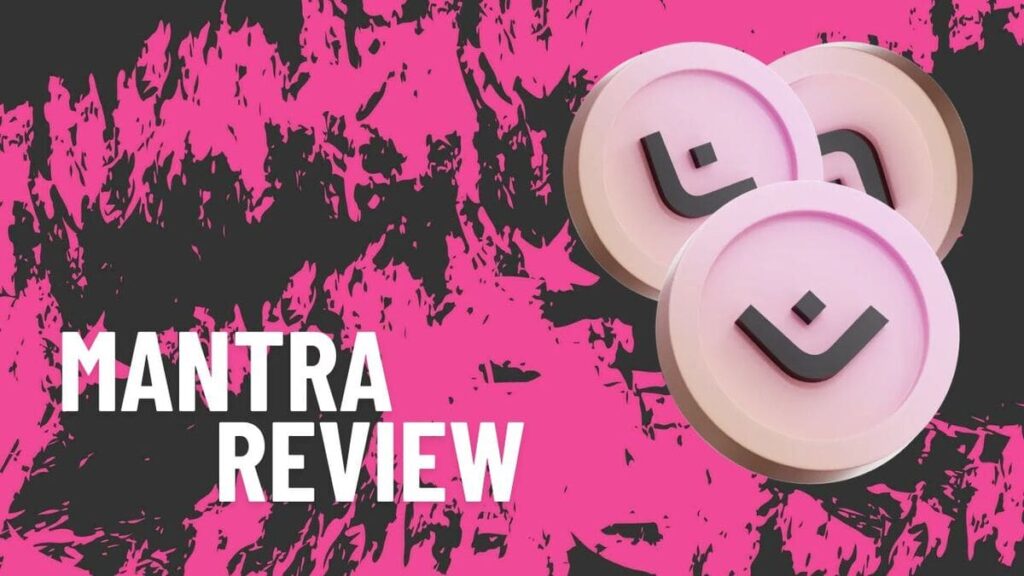The evolution of decentralized finance (DeFi) has led to innovative platforms that aim to close the gap between traditional financial systems and the possibilities offered by blockchain technology. MANTRA is one of these solutions, combining governance tools, staking, and lending with a focus on tokenizing real-world assets (RWAs). Through its advanced infrastructure and with interoperability as a priority, this blockchain seeks to expand the reach of DeFi and create an accessible and regulatory-compliant ecosystem for both users and institutions.

What is MANTRA?
MANTRA is a DeFi platform that includes its own blockchain, designed to facilitate the tokenization of real-world assets (RWAs). This Layer 1 blockchain is built on the Cosmos ecosystem, which allows interoperability with other blockchains through the Inter-Blockchain Communication (IBC) protocol. This modular approach enables the integration of various types of assets into its ecosystem.
How Does Mantra Work?
The platform is structured around several key components, which are worth knowing individually.
MANTRA Chain
It is the main blockchain of the platform, built to support asset tokenization and designed to comply with real-world regulations. It has the ability to interact with external networks.
MANTRA Nodes
A network of nodes that helps secure the blockchain and offers incentives to users through staking, contributing to the security and validation of transactions within the ecosystem.
MANTRA Finance
A suite of DeFi services that includes asset swaps, lending, and other financial products, all in a non-custodial manner, meaning users do not have to give full control of their funds to a third party.
What is Aumega?
AUMEGA is the flagship platform of MANTRA Chain designed to facilitate the trading of RWAs as well as cryptocurrency assets. It combines DeFi mechanisms with centralized finance (CeFi) to offer a hybrid trading experience.
AUMEGA employs two main mechanisms for its operation:
- Automated Market Maker (AMM): Allows users to swap assets without the need for a centralized order book. Prices are automatically determined based on the supply and demand of assets in the liquidity pool.
- Central Limit Order Book (CLOB): This mechanism allows users to place buy and sell orders directly, with set prices that are visible to all market participants.
The goal of AUMEGA is to facilitate the tokenization and trading of real-world assets, such as real estate, stocks, or consumer goods tokenized on the blockchain, allowing these assets to be traded more efficiently, accessibly, and regulated. Additionally, its integration with traditional banking platforms facilitates the connection between crypto and fiat.

OM Token: Functionalities and Use in the Ecosystem
The OM token is the heart of the MANTRA ecosystem, playing a fundamental role in its operation both in terms of governance and network security.
GOVERNANCE
OM token holders have the ability to participate in decisions within the MANTRA ecosystem. This allows them to propose changes within the network, vote on updates and proposals, and have influence over the future direction of the project.
STAKING AND REWARDS
Staking OM is one of the token’s most important functionalities. Users can delegate their tokens to validators within the network, helping secure the blockchain and, in return, receiving rewards. This process has several benefits:
- Network security: Stakers help protect the network and maintain its integrity.
- Generation of passive income: By staking, users can earn additional returns on their holdings.
- Greater governance power: As users participate in staking, they can also increase their voting power.
USE IN MANTRA CHAIN AND AUMEGA
OM is used within MANTRA Chain to secure the network, as part of the Proof of Stake (PoS) consensus mechanism. It is also used in AUMEGA, the trading platform. OM holders also have access to liquidity, interactions with traditional banks, and the ability to trade tokenized assets.
EXPANSION AND ISSUANCES
The total supply of OM is initially unlimited, which implies controlled inflation as new tokens are issued to secure the network. This leads to validators being continually incentivized to actively participate in the maintenance of the blockchain. However, the expansion of the supply could raise concerns about inflation, as the token’s value could be affected if the issuance is not adequately balanced with demand.

Is It a Good Idea to Invest in OM?
Investing in OM could be a good option for those who believe in the long-term potential of real-world asset (RWA) tokenization solutions and decentralized governance. However, as with any investment, inherent risks are considerable, especially due to market volatility and uncertainty about the large-scale adoption of its platforms and technologies. It is important to conduct thorough analysis, stay informed about project updates, and consider the level of risk one is willing to take.
Conclusion
MANTRA is an ambitious platform that offers innovative solutions, positioning itself as a project with the potential to attract both users and institutions. However, it must overcome some challenges to thrive.
While it presents a solid business model and a clear vision for the future of the DeFi economy, its success will depend on the adoption of its platforms, competition in the sector, and the development of its technology. For those interested in staking, governance, and asset tokenization, MANTRA may be an interesting option, but as always in this industry, it is crucial to conduct a detailed evaluation and consider all risks before investing










